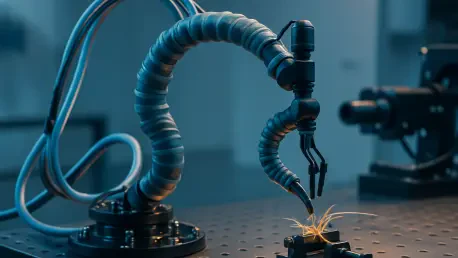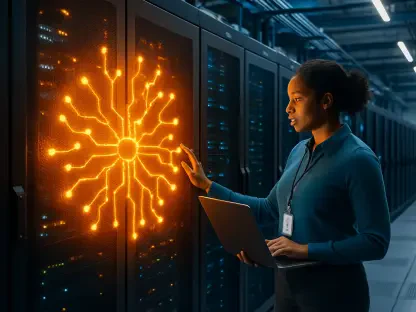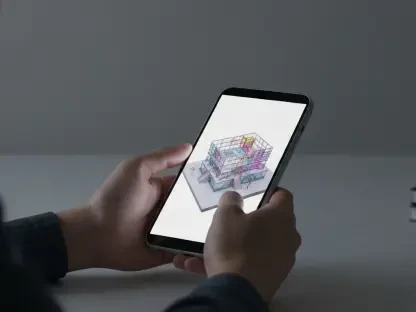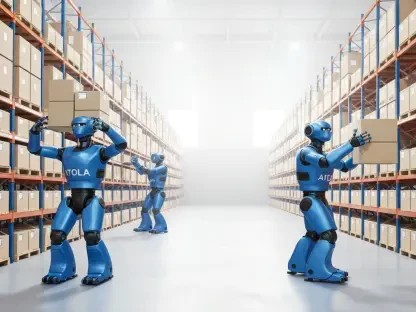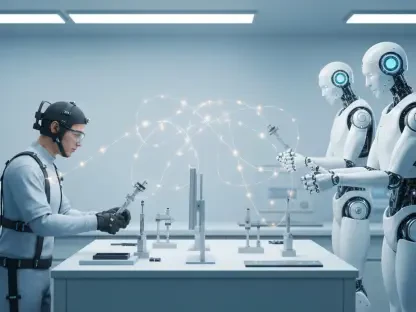In the evolving field of robotics, a breakthrough concept driven by bioinspired design is transforming traditional engineering methodologies. Researchers are integrating the intricate adaptability and efficiency of biological organisms into robots through innovative 3D printing techniques. Central to this revolution is the development of a musculoskeletal-inspired elephant robot, a creation that emulates the complex relationships between soft and rigid tissues observed in nature. This endeavor encapsulates a blend of nature’s adaptability with human ingenuity, providing a glimpse into the future where machines harness biological prowess for enhanced functionality and versatility.
Bridging Biology and Robotics
The Complexity of Biological Inspiration
The challenge of replicating biology’s diverse musculoskeletal systems has long been a hurdle in robotics. These systems allow animals to perform various sophisticated movements, from the agile maneuvers of a cheetah to the precise dexterity evident in human hands. Traditional 3D printing techniques, despite their versatility, have previously fallen short of achieving continuous control over properties such as stiffness and load-bearing strength. These limitations have impeded efforts to mimic the seamless integration of biological tissues in robotic designs, until now.
The pioneering research conducted by Josie Hughes and her team at the CREATE Lab is addressing these challenges head-on. By focusing on programmable lattice structures crafted from foam materials, they have developed a way to create over one million potential configurations. These lattices consist of individual units, or cells, which can be customized to achieve the desired shapes and positions. The result is an infinite array of geometric and mechanical properties that offer unprecedented control over robotic design elements, paving the way for more lifelike movements and interactions.
Programmable Cellular Innovation
The lattice structures leveraged by Hughes’ team are comprised of two primary cell types: body-centered cubic (BCC) and the X-cube. Each type imparts distinct characteristics, like stiffness and deformation capabilities, to the robotic tissue. This approach allows for a continuum of stiffness profiles essential for replicating complex biological forms such as an elephant’s trunk. This capability is achieved by printing hybrid cells, enabling continuous spatial blending of cell properties, effectively creating a spectrum between the BCC and X-cube.
This strategy enables the team to construct robotic tissues capable of remarkable adaptability, including sliding plane joints reminiscent of the bones in small animal feet or the bending uniaxial joints found in knees. The potential to intricately imitate the dynamic motion of an elephant’s trunk demonstrates the strength and flexibility of this design. The lattice structures allow robots to seamlessly transition between various movement types while maintaining the stability and precision required for functional mobility.
The Dual-Dimensional Approach
Expanding Lattice Flexibility
Beyond the inherent geometric diversity afforded by the lattice structures, Hughes’ team introduced an additional dimension of programmability. This involves manipulating the spatial positioning of cells within the lattice, including rotational, shifting, and superimpositional changes. By doing so, the team can discover new cell combinations and thereby broaden the array of mechanical properties available in their designs.
This dual-dimensional approach exemplifies the potential for customization in robotic design, with one example being a lattice cube with four superimposed cells. This yields approximately four million possibilities, expanding to over seventy-five million configurations with five cells. The vast potential for mechanical variation underscores the technological evolution toward producing robots that can perform diversified tasks with biological agility and finesse.
Mimicking Nature’s Mastery
Key to this technological leap is the development of varied tissue types with unique movement capabilities, achievable through the dual programming paradigm. Specific adaptations include creating sliding plane joints, bending uniaxial joints, and biaxial joints akin to those found in animal skeletons. In replicating the elephant’s trunk, the team successfully fabricated specialized lattice segments capable of twisting, bending, and rotating with fluid motion.
These innovations indicate a significant advancement in bioinspired design, pushing the boundaries of what robots can achieve in functional terms. Robots employing these methods demonstrate the seamless integration of design philosophies grounded both in biology and advanced engineering. This fusion creates machines with impressive morphological and mechanical agility, ready to navigate diverse environments with skill and precision.
Future Implications and Applications
Revolutionizing Robotics Engineering
The potential applications for such advanced bioinspired robotic technology are extensive and far-reaching. The lattice structures, likened to honeycomb in terms of their strength-to-weight ratio, facilitate the manufacture of exceptionally lightweight yet powerful robots well-suited for motion in fluid environments, such as air or water. The open foam design also presents opportunities for incorporating additional technologies, like sensors, to elevate the robot’s intelligence and interaction capabilities.
This innovative approach represents a shift towards versatile, adaptive machines capable of undertaking complex tasks across various disciplines. From search and rescue operations in challenging terrains to intricate surgical procedures requiring dexterity and precision, these robotic advancements hold a promise for profound changes in how technology assists humans in critical and routine tasks alike.
Expanding the Horizons of Robotics
In the rapidly developing world of robotics, bioinspired design is revolutionizing traditional engineering approaches. This groundbreaking concept involves drawing inspiration from the adaptive and efficient characteristics found in biological organisms and integrating them into robotic systems via cutting-edge 3D printing technologies. At the forefront of this transformation is the creation of a musculoskeletal-inspired elephant robot, which replicates the complex interplay between soft and rigid tissues, much like those seen in nature. By emulating these natural systems, researchers are creating machines that not only mimic but also enhance biological functions for improved performance and versatility. This fusion of nature’s adaptability with human innovation is paving the way for a future where machines are imbued with biological strengths, offering new potentials in various fields. With such advancements, the boundary between living organisms and machines continues to blur, leading to innovations that could change the landscape of robotics and its applications in everyday life.
